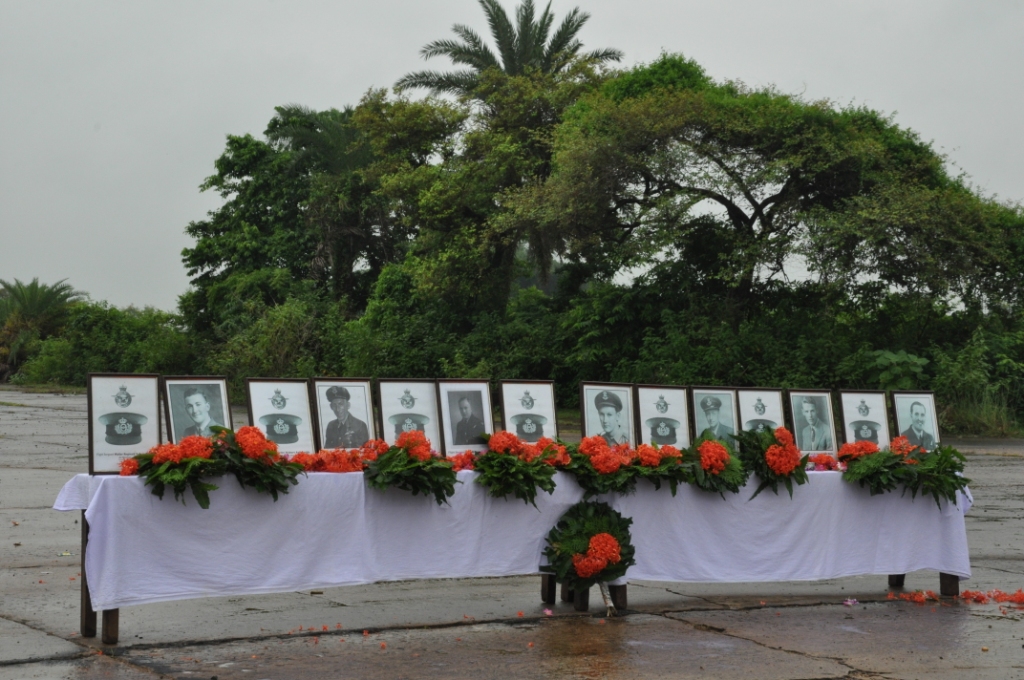Rasgovindpur: A memorial service was held at the Amarda Road Airstrip yesterday for the fourteen airmen who had died in a crash here on the 26th of July 1945. War historian Anil Dhir, Gandhian Aditya Patnaik, social activist Dr. Biswajit Mohanty and the staff of the Gandhi Eye Hospital at Rangamatia, locals including school children paid homage to the dead airmen who have been forgotten in history. Wreaths were laid for each of the dead airmen.
Very few people know that the skies of Odisha had seen the crash of two aircraft which has collided against each other and resulted in the deaths of 14 airmen. On the 26th of July 1945 two British Royal Air Force B-24 Liberator four-engine bombers collided at low altitude. The aircrafts were based at the Amarda Road airfield and were part of a six-plane contingent from the Air Fighting Training Unit engaged in a formation flying exercise. Fourteen airmen – the crews of the two aircraft died in the crash. They were of nationalities- six British, three American, one each Canadian, Dutch, New Zealander, Australian and one Indian.
The Rasgovindpur Airstrip had a short but secret illustrious history which has never been made public. It had the longest runway in Asia, more than 3.5 km long. The total runways, taxiways, aprons, etc. were more than 60 km. Today all is forgotten, no details of the activities that happened here between 1943 and 1945 exist, not even in government and military records. The station came into existence during the war as a forward airfield against the Japanese conquest of Burma. The large strip served its purpose well as a landing ground for planes and also as a training space for special bombing missions. The Amarda Road airstrip, as it was called in war terminology, spreads across an area of nearly 900 acres. Built in the 1940’s at a cost of Rs 3 Crores, it was eventually abandoned after the war. It was named as the Amarda Road Airfield due to the nearby Amarda Road railway station.
Even today, seven decades after the base was made, one can still see the remains of the airfield, their 11000 feet concrete runway still intact, though the buildings that once cluttered the edges are gone. The offices, hangars, mechanic sheds and plaster walled barracks with thatched roofs have been ripped down. Instead, local women dry laundry and farmers their grain on the warm tarmac. The cows and goats crop weeds along the runway edges. The story of this crash and the victim had been lost in history.
Anil Dhir has requested the government of Odisha and West Bengal to erect small memorials for these airmen at Amarda Road and the crash site. He has also requested to open up the sealed underground bunker which may hold relics of the period. Aditya Patnaik has proposed that he would give ample space in the Gandhi Gurukul at the airbase for setting up a small museum which will highlight the importance of the airbase during World War II. The setting up of a Peace Museum was mooted last year and Dhir has contacted the British, Australian, Dutch and USA authorities for material to be displayed at the Museum. The response has been very positive. Anil Dhir also said that a book on the history of the base the and crash would be released on the next commemoration day.
Dr. Biswajit Mohanty said that the Odisha government should understand the importance of this historical airfield and promote it as a destination. There is a big tourism potential of the base. Many groups from Japan, Britain, America and other countries come to visit the war memorials in the North East every year. He said that all efforts should be taken up for the Museum. The airstrip is an important piece of history connected to the World War II and has a lot of significance as it was a secret base.
Ankit Kotecha from Balasore, who is a Pilot with Spicejet, too attended the memorial service.


Comments are closed.